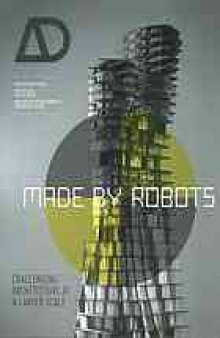 جزییات کتاب
جزییات کتاب
In the next decade or so, the widespread adoption of robotics is set to transform the construction industry: building techniques will become increasingly automated both on- and off-site, dispensing with manual labour and enabling greater cost and operational efficiencies. What unique opportunities, however, does robotics afford beyond operational effectiveness explicitly for the practice of architecture? What is the potential for the serial production of non-standard elements as well as for varied construction processes? In order to scale up and advance the application of robotics, for both prefabrication and on-site construction, there needs to be an understanding of the different capabilities, and these should be considered right from the start of the design and planning process. This issue of AD showcases the findings of the Architecture and Digital Fabrication research module at the ETH Zurich Future Cities Laboratory in Singapore, directed by Fabio Gramazio and Matthias Kohler, which explores the possibilities of robotic construction processes for architecture and their large-scale application to the design and construction of high-rise buildings. Together with other contributors, such as Philippe Morel, Neri Oxman, Francois Roche and Antoine Picon, they also look at the far-reaching transformations starting to occur within automated fabrication: in terms of liberation of labour, entrepreneurship, the changing shape of building sites, in-situ fabrication and, most significantly, design. Read more... Abstract: Showcases the findings of the Architecture and Digital Fabrication research module at the ETH Zurich Future Cities Laboratory in Singapore, which explores the possibilities of robotic construction processes for architecture and their large-scale application to the design and construction of high-rise buildings. Read more...



 دانلود کتاب
دانلود کتاب

 جزییات کتاب
جزییات کتاب





 این کتاب رو مطالعه کردید؟ نظر شما چیست؟
این کتاب رو مطالعه کردید؟ نظر شما چیست؟
